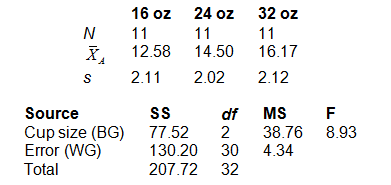Which of the following statements is true when selecting target variables for self-monitoring?
a. a behavior should be targeted that is not likely to be a problem for the student to exhibit
b. the behavior targeted for change must be the same as the behavior targeted to be self-monitored
c. the behavior targeted to be self-monitored is not always the same behavior as the one targeted for change
d. both a and b
e. all of the above
C
You might also like to view...
_______ is the most prestigious credential a teacher can earn
A. The Intern Credential B. The Professional Clear Credential C. National Board Certification D. The Certificate of Clearance
Waking up late, spilling coffee on your pants, and taking the wrong exit on your drive to work are examples of ________.
A. consequences B. uplifts C. hassles D. eustress
You decide to conduct the analytical comparison of 16 oz vs. 24 oz. Which of the following is the appropriate critical value for this analytical comparison?
As there is a growing concern about alcohol-related problems on college campuses, a team of researchers was interested in studying students’ perceptions about alcohol consumption—more specifically, in how students define a “drink” (White et al, 2004).
These researchers were interested in seeing whether the size of a cup influences how much beer students will pour into the cup. In their study students poured what they believed were 12 ounces of beer into one of three cups of different sizes (16, 24, or 32 ounces). They hypothesized that the larger the cup, the more beer students would pour. The results of their analyses are presented below:

a. 4.32
b. 4.30
c. 4.26
d. 4.17
All of the following is true of study skills EXCEPT this:
a. Specific skills employed to acquire, record, remember, and use information efficiently b. Necessary skills taught through a teacher lecture learning approach c. Often directly taught by classroom teachers d. None of the above